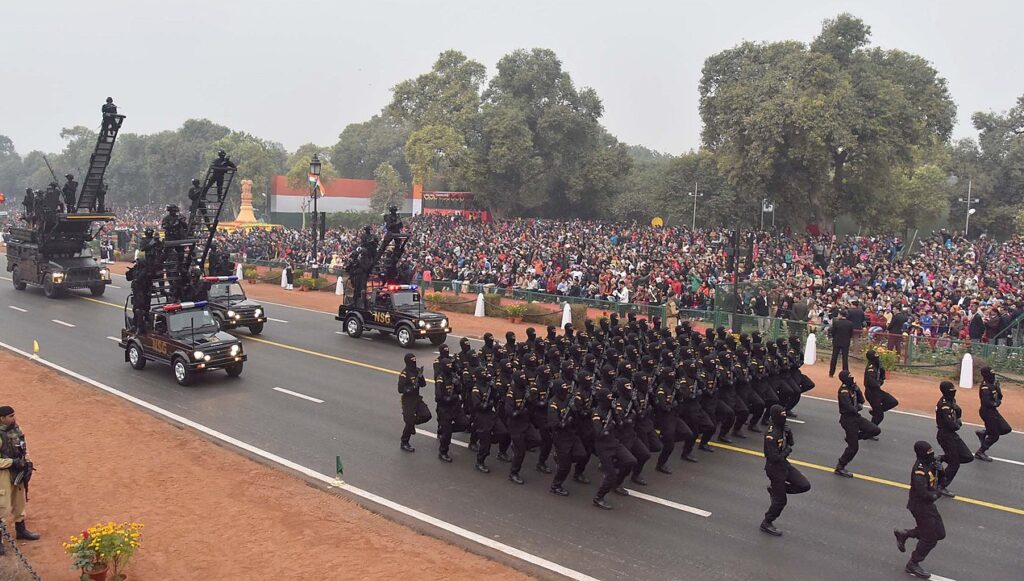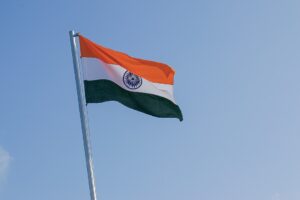
Republic Day Parade
The Delhi Republic Day parade is the largest and most important of the parades marking the Republic Day celebrations in India.
The Republic Day of India is celebrated to commemorate the occasion when the Consitution was formed in 1950. This day marks the date on which the Constituent Assembly of India formally adopted the Constitution of India especially drafted and designed Constitution of India was enforced by replacing the Government of India Act 1935. Since, this day is celebrated as the Republic Day of India, every year, as one of the national events.
After attaining freedom, India was declared a constitutional monarchy. The nation still did not have a permanent constitution. Therefore, on 28th August 1947, the drafting committee was established under the leadership of the eminent Dr. B. R. Ambedkar. The drafting committee submitted the first draft of the Indian Constitution to the elected assembly on 4th November 1947. The Constituent Assembly organised a series of sessions to discuss and years. All these sessions were open to the public and leaders from all parts of the country voiced their opinions.
Furthermore, the Constituent Assembly adopted the Indian Constitution on November 26, 1949 but it did not come into effect immediately. The documents that established the charter were signed on January 24, 1950 and the Constitution of India officially come into effect for the nation on January 26, 1950. This was also the day when India’s first-ever president, Dr. Rajendra Prasad began his term.
Republic Day Parade event
The main Republic Day event is organised every year on this date in the capital of India, New Delhi at Rajpath. The President of India Presides over the event and unfurls the National Tricolour Flag as the first citizen of the country. The Celebrations of the day mark the spirit when democracy and justice were chosen to run the nation.

As unfurls the National flag, as the National Anthem Jana Gana Mana is played, and a 21-gun salute is fired by the Indian Army Regiment of Artillery as the PBG renders the National Salute and its standard is dipped.
Next, as the PBG trots off the dais, important awards like the Ashok Chakra and Kirti Chakra are given away by the President. The President comes forward to award the medals of bravery to the people from the armed forces for their exceptional courage in the field and also the civilians, who have distinguished themselves by their different acts of valour in different situations, either in military, civilian or disaster scenarios.
Beating retreat
Beating retreat in India officially denotes the end of Republic Day festivities. It is conducted on the evening of 29 January, the third day after Republic Day and is organized by Section D of the Ministry of Defence.[6] It is performed by the bands of the three wings of the military, the Indian Army, Indian Navy and Indian Air Force, and pipe bands from the Army, plus from 2016 a massed formation of bands of the Central Armed Police Forces and the Delhi Police. The venue is Raisina Hills and an adjacent square, Vijay Chowk, flanked by the North and South blocks of the Central Secretariat and the Rashtrapati Bhavan (President’s Palace) towards the end of Rajpath.
The ceremony was started in the early 1950s when Elizabeth II and Prince Philip were visiting India for the first time after independence. The then Prime Minister Jawaharlal Nehru summoned Maj. G.A. Roberts, an officer in The Grenadiers, asked him to do something spectacularly creative and eventful for Elizabeth’s visit. Roberts thus officially conceived of the Beating Retreat in honour of the visit, by developing the ceremony of display by the massed bands. Army, Air Force and Navy bands consisting of pipes, drums, buglers and trumpeters from various regiments took part. It has become an official ceremony to have a Head of State of a country as the chief guest and that year the Beating Retreat was in their honour.